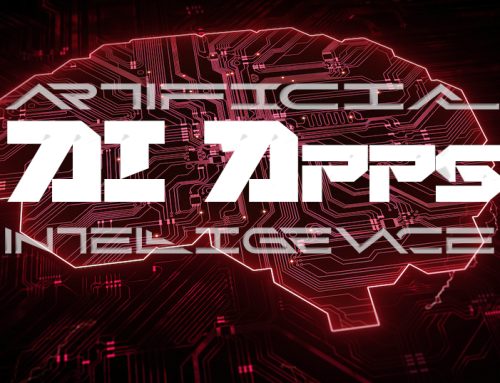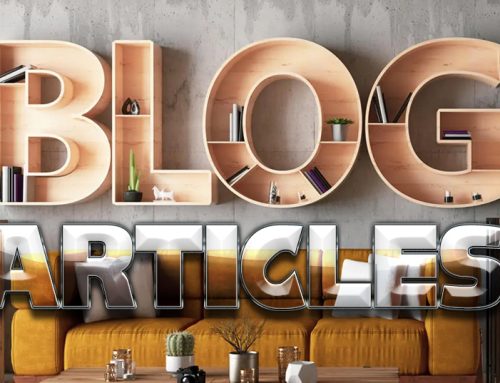Pay Per Click

In 2025, the landscape of Pay-Per-Click (PPC) advertising is undergoing a
significant transformation, driven by advancements in artificial intelligence
(AI) and recent updates from major platforms like Google. Here’s an
updated overview reflecting these changes:
AI-Driven PPC: Navigating the New Era
Key PPC Platforms
-
Google Ads: Remains the leader in search advertising, now
enhanced with AI features like AI Overviews and AI Mode, which
integrate ads directly into AI-generated search summaries. We’ll
see if this holds true, or if the market sentiment will kick them off
their high perch. They have already lost over 17% of the marketshare
already from their past dominant position -
Microsoft Advertising (Bing Ads): Offers valuable opportunities,
especially for targeting professional and older demographics. -
Social Media Platforms: Facebook, Instagram, LinkedIn, TikTok,
and others continue to provide robust PPC options, now increasingly
incorporating AI for better targeting and ad placements.
Benefits of AI-Integrated PPC
-
Immediate Visibility: AI accelerates the ad placement process,
ensuring timely visibility to target audiences. -
Enhanced ROI: AI-driven optimizations lead to more efficient ad
spend and higher returns. -
Precision Targeting: AI analyzes vast datasets to refine the audience
targeting based on behavior, preferences, and demographics. -
Budget Efficiency: Automated bidding strategies adjust in real-time
to maximize budget utilization.
Types of PPC Campaigns
-
Search Ads: Text-based ads appearing on search engine results pages.
-
Display Ads: Visual ads are displayed across a network of websites.
-
Remarketing Ads: Target users who have previously interacted with your website or ads.
-
Video Ads: Engaging video content, particularly effective on platforms like YouTube.
-
Shopping Ads: Product-based ads that appear in shopping search results.
-
Social Media Ads: Sponsored content on social platforms, tailored to user interests and behaviors.
Keyword Strategy in the AI Era
-
Long-Tail Keywords: Focus on specific, less competitive phrases that align closely with user intent.
-
Negative Keywords: Exclude terms that are irrelevant to your offerings to prevent wasted ad spend.
-
Voice Search Optimization: Adapt keywords to match natural language queries used in voice searches.
Creating High-Performing PPC Ads
Your ad copy plays a significant role in PPC success. Success or failure lies with the quality of your ad. A compelling headline needs to be crafted to grab attention. Sometimes, because you don’t know which one may hit, you may have to do this several times over. Additionally, you need to have a clear Call to Action that encourages the person to click to what you have linked. And then a good healthy serving of A/B testing is needed to compare which ones hit and which ones miss, and to turn of the ones not doing well and ramp up the ones that are.
Landing Page Optimization for PPC
A landing page, or in a much broader sense, a sales funnel, cannot be complete without a page that has been optimized to gain from the click-through of the ad. A well-optimized landing page ensures users take action after clicking your ad, and the better you do this, the better your Click ratios and Click to click-to-acquisition rates are going to be.
Best Practices:
- Ensure fast page speed and mobile responsiveness.
- Use clear CTAs and engaging visuals.
- Keep forms short and easy to complete.
Pay-Per-Click Bidding Strategies
Choosing the right bidding strategy is crucial for cost efficiency.
Common Strategies:
- Manual CPC: You control the bid amount for each keyword.
- Automated Bidding: Google adjusts bids based on conversion likelihood.
- Target ROAS (Return on Ad Spend): Focuses on maximizing revenue for ad spend.
PPC Budgeting and Cost Control
Keeping ad spend under control ensures profitability.
Tips to Reduce Costs:
- Improve Quality Score to lower CPC.
- Use ad scheduling to target peak times.
- Continuously optimize campaigns based on data.
What to Track and Measure for Top PPC Performance
To optimize your PPC strategy, track key performance indicators (KPIs):
| Metric | Definition |
|---|---|
| CTR (Click-Through Rate) | The percentage of people who click on your ad |
| CPC (Cost Per Click) | The amount you pay per click |
| ROAS (Return on Ad Spend) | Revenue generated per dollar spent |
Recent Google Ads Updates Impacting PPC
Integration of Ads into AI Search Features
Google has expanded the inclusion of ads within its AI-generated search features, such as AI Overviews and AI Mode. These ads are now appearing on desktop and mobile platforms in the U.S., providing new opportunities for advertisers to reach users through AI-curated content.
Policy Update on Multiple Ad Placements
As of April 14, 2025, Google updated its Unfair Advantage Policy, allowing the same brand to display multiple ads in different locations on the same search results page. This change offers advertisers increased visibility but may also lead to higher competition and costs.
Performance Max Enhancements
Google’s Performance Max campaigns have introduced new features, including:
-
Campaign-Level Negative Keywords: Allowing advertisers to exclude irrelevant search terms more effectively.
-
High-Value Customer Acquisition Mode: Utilizing AI to identify and target potential high-value customers based on existing data.
-
Brand Exclusions for Product Feeds: Providing more control over which brands appear in Shopping ads.
Embracing AI in Your PPC Strategy
To stay competitive in the evolving PPC landscape:
-
Adopt AI Tools: Utilize AI-powered platforms for ad creation, targeting, and optimization.
-
Focus on Data Quality: Ensure your customer data is accurate and comprehensive to enhance AI targeting capabilities.
-
Stay Informed: Keep abreast of platform updates and industry trends to adapt your strategies accordingly.
By integrating AI into your PPC campaigns, you can achieve more precise targeting, efficient budget utilization, and improved overall performance.
The Take Away
As long as they are being offered on the major platforms, Pay Per Click Ads are worth, at least, looking into and playing with. There has been no better way in the past to bring in the eyes as quickly as you can win them at the auction. Future trends in PPC Advertising are definitely going to morph the genre. AI-powered PPC automation will be able to help you better target, but it will soon be not from AI to the person looking, but from one AI Bot Agent to another set to find certain things on the Search Engine.
Also, the likes of Voice search from the likes of Alexa and Siri, as well as many of the Large Language Models that have voice input features, are going to cut into this as well. PPC advertising remains a powerful tool for businesses looking to generate leads and increase revenue quickly. By implementing strategic keyword research, optimizing ad copy, and refining bidding strategies, businesses can maximize their ROI and stay competitive in the digital marketplace.
If you feel this is right for you and your company, Connect with Us Here.
FAQs on PPC Advertising
1. How much does PPC advertising cost?
PPC costs depend on your industry, keyword competitiveness, platform, and targeting method. With AI-enhanced bidding and keyword segmentation, you can control spend efficiently, whether you’re working with $500 or $50,000.
2. How soon can I expect results from a PPC campaign?
With proper setup and automation, results often begin within 3–7 days. However, campaigns generally stabilize and optimize within 2–4 weeks as AI systems learn and adapt.
3. Is PPC more effective than SEO?
They serve different purposes. PPC delivers immediate visibility and traffic, while SEO builds sustainable long-term rankings. The strongest strategy combines both—with PPC often feeding valuable data back into SEO planning.
4. What’s considered a good PPC conversion rate?
While the industry average is under 1%, well-optimized campaigns often hit 2–5%+ conversion rates. With AI-enhanced targeting, A/B tested creatives, and high-performing landing pages, we frequently outperform standard benchmarks.
5. Can I run PPC campaigns on a small budget?
Yes. One of PPC’s advantages is flexibility. You can start small, test, and scale. Our AI tools ensure your budget is used where it’s most likely to convert—minimizing waste and maximizing ROI.
6. How do I know if my PPC campaign is performing?
Success is measured through key performance indicators (KPIs) like:
-
CTR (Click-Through Rate) – Are people clicking your ads?
-
CPC (Cost Per Click) – Are you paying efficiently for traffic?
-
ROAS (Return on Ad Spend) – Are your ads profitable?
-
Conversion Rate – Are clicks turning into actions?
Our dashboards and reports give you real-time clarity on every metric.



